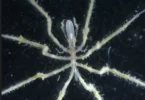Dive with me into the abyss of the ocean, where life thrives in forms so spectacular and behaviors so bewildering, they’d put the most imaginative science fiction to shame. The marine world is a mosaic of biodiversity, brimming with secrets waiting to be unveiled. Together, let’s embark on a journey to discover just a sliver of the wonders it holds. From masters of disguise to unseen architects, the ocean’s inhabitants have tales that could astonish us to our very core.
Overview of marine biodiversity
The ocean is the earth’s final frontier, covering 70% of our planet’s surface and home to millions of species, with many still undiscovered. The marine ecosystem is a complex, interconnected web that supports a dazzling array of life forms, from microscopic plankton to the colossal blue whale.
Importance of understanding marine life
Delving into the depths of marine knowledge not only satiates our curiosity but also illuminates the intricate balance of our planet’s ecosystems. Understanding how marine creatures live, interact, and impact their environment is key to conserving the ocean, an essential life support system for Earth.
“Every dive into the ocean is a step towards understanding the complex mysteries that reside within its waters.”
Teasing the unexpected insights to be shared
Prepare to be amazed by the cunning camouflage artists, the underwater musicians, the unexpected constructors, the vibrant kaleidoscope of colors, and the giants and miniatures that call the ocean their home. These insights lend us a glimpse into the resilience and creativity of marine life.
Masters of Camouflage: The Artful Dodgers of the Deep
Cephalopod Camouflage
Octopuses and their cephalopod cousins are the Houdinis of the sea. Through an intricate system of chromatophores and iridophores, they can change not just their color but also their skin texture, blending seamlessly into their surroundings. This ability is not just for hiding; it’s a sophisticated tactic for hunting unsuspecting prey as well.
Deep-Sea Disguises
On the ocean floor, being unnoticeable can mean survival. Flatfish, stonefish, and flounders have perfected the art of looking like anything but a tasty meal, with bodies that mimic the textures and colors of the seafloor, making them nearly invisible to both prey and predator.
The Transparent Tacticians
In the pelagic zone, where hiding places are scarce, many creatures opt for transparency. Jellyfish, some shrimp species, and larval fish are practically invisible in the water, a strategy that keeps them safe from predators and allows them to sneak up on their prey.
The Unheard Melodies: Communication Beneath Waves
Whales: The Ocean’s Vocalists
The haunting songs of whales traverse hundreds, even thousands of miles underwater. Each species has its own signature melody, used for attracting mates, social interaction, and navigating the vast oceans. Scientists study these songs, piecing together the complex social lives of these majestic creatures.
Fish Chorus
Not to be outdone by their mammalian counterparts, many fish species produce sounds for communication. Using a variety of mechanisms, they grunt, click, and drum to signal distress, attract mates, and defend territory. At times, the ocean floor is alive with their underwater symphony.
Crustacean Percussionists
Snapping shrimp produce one of the loudest noises in the ocean with their claws, creating a cacophony that can stun their prey or communicate with fellow shrimp. This noisy environment is a critical component of the bustling life on coral reefs and other marine habitats.
Unlikely Architects of the Sea
Coral Reefs: Cities Underwater
Coral reefs, often called the rainforests of the sea, are built by tiny coral polyps. These structures provide homes, food, and spawning grounds for thousands of marine species. Coral reefs are not just biodiversity hotspots; they’re also vital for human economies and coastal protection.
The Mollusk Constructors
Oysters and clams play a crucial role in water filtration, improving water quality for countless organisms. Their shells contribute to the structure of habitats, offering protection and space for other marine life.
Beavers of the Ocean: Dam-Building Fish
Certain fish species construct elaborate nests or dams in waters worldwide. These constructions can alter the environment in ways that benefit a multitude of species, showcasing the incredible impact of these underwater engineers.
The Kaleidoscope of the Ocean: Unbelievable Colors and Patterns
The Purpose of Patterns
The riot of colors on a clownfish or the ornate patterns of a mandarin fish serve multiple purposes: camouflage, warning predators of toxicity, or attracting mates. The ocean’s palette is as vast as its inhabitants, and every color scheme has its purpose.
Bioluminescence: Living Lights
Perhaps nothing is as magical as bioluminescence, the ability of marine creatures like deep-sea squids and anglerfish to produce their own light. This mesmerizing trait is used to attract prey, communicate, and even evade predators in the ocean’s darkest depths.
Seasonal Shifters
Some marine animals change colors with the seasons, adapting to varying temperatures and environments. This fascinating mechanism ensures their survival through changing conditions, highlighting the adaptability and resilience of marine life.
Giants and Miniatures: The Extremes of Marine Sizes
The Ocean Giants
The blue whale, larger than any known dinosaur, commands awe and respect as it navigates the vast seas. Alongside it, the mysterious giant squids embody the enigmatic allure of the deep, reminding us of how much remains to be discovered.
Minuscule Marvels
At the other end of the scale, plankton and the pygmy seahorse, though small, play monumental roles in the marine food web. Their existence is crucial for the survival of many larger species, demonstrating that size does not diminish importance in the ocean’s complex ecosystem.
Size as a Survival Strategy
In the marine world, being gigantic can mean fewer predators, while being minuscule can mean being overlooked. Each size comes with its own set of survival strategies, from how these creatures move to how they reproduce, reflecting the diverse ways life thrives under the sea.
Conclusion
The ocean is a realm of infinite wonders, a treasure trove of mysteries that continue to fascinate and humble us. As we peel back the layers of the deep, let’s remember the crucial role these creatures and their habitats play in our world’s balance. Preserving marine biodiversity is not just about saving them; it’s about ensuring our future on this blue planet. As we continue to explore and learn, let’s commit to protecting these astonishing marine animals and their homes, for in their survival lies ours.








